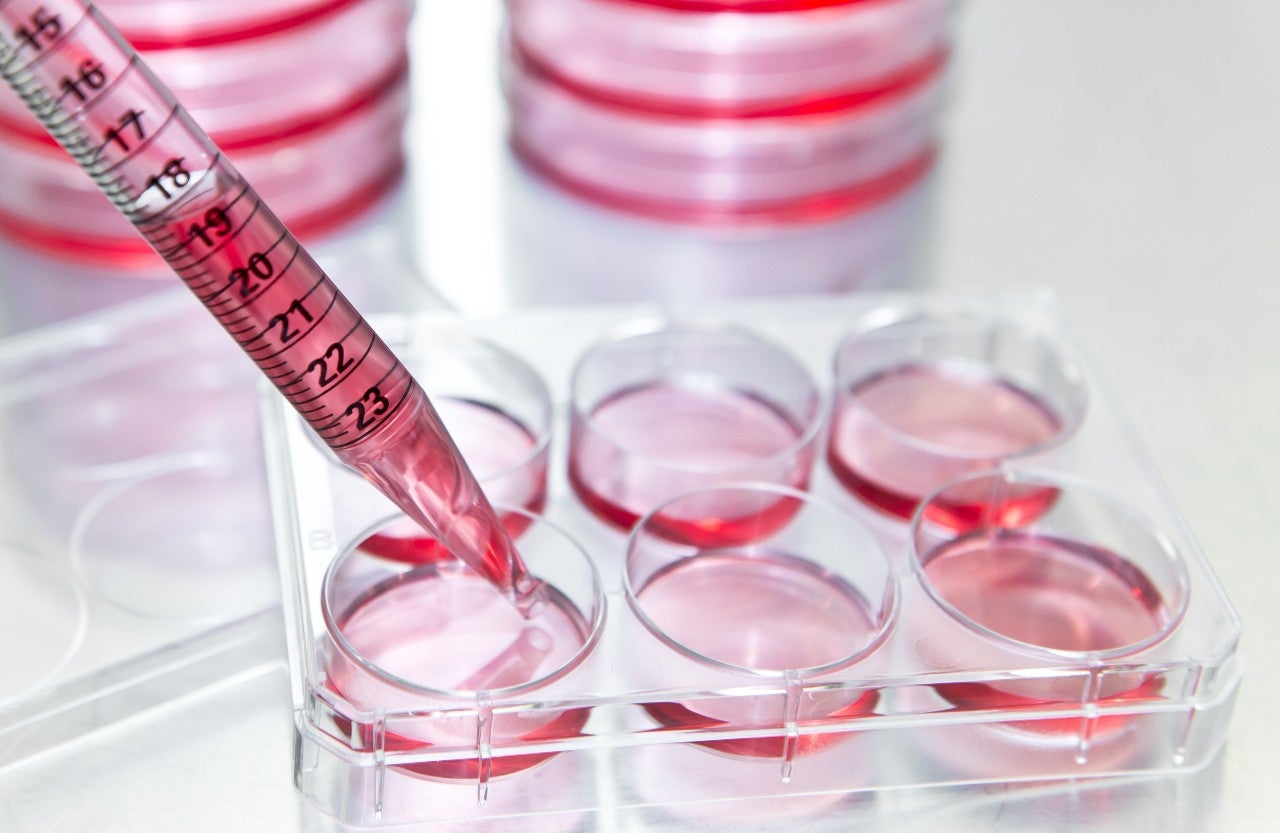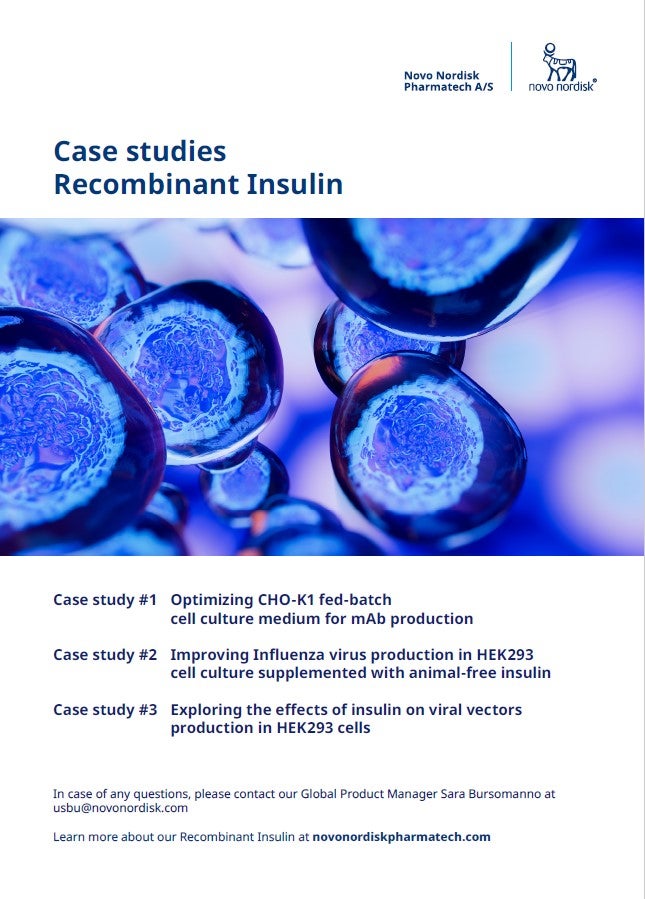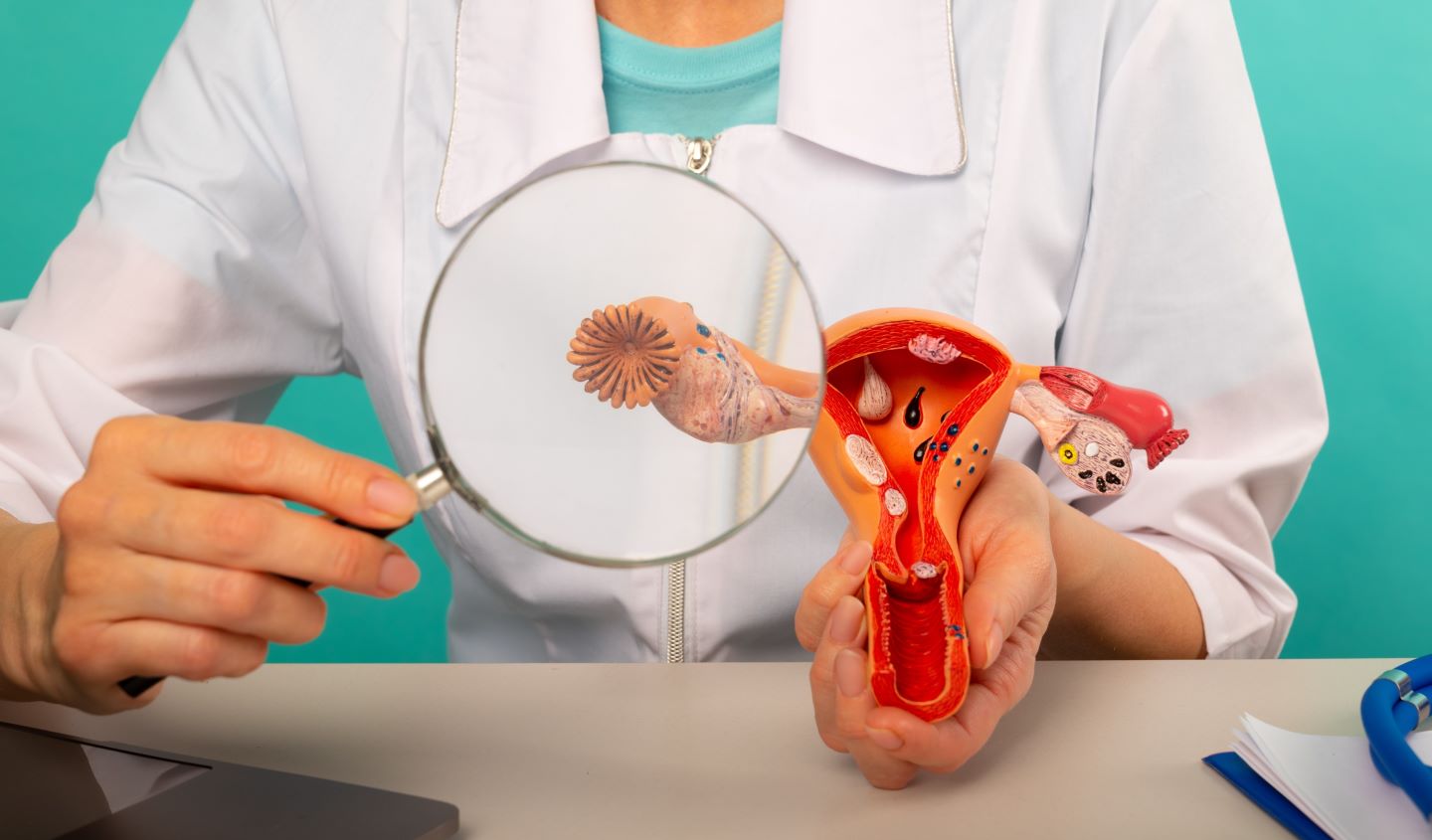Understanding the role of recombinant insulin in cell culture systems: What the studies say
A wide range of host cell lines are used in bioprocessing, from Chinese hamster ovary (CHO) cells to human embryonic…

A wide range of host cell lines are used in bioprocessing, from Chinese hamster ovary (CHO) cells to human embryonic kidney cells (HEK-293), mouse myeloma (NS0), Sf9 insect cells, and more. In all the cases, the cell culture media needs to be optimised to improve its performance and achieve higher yields of the desired protein. Among several growth-promoting supplements added to the cell culture media formulations, insulin is one of the most common.
Recombinant insulin is used as a supplement in the upstream manufacturing of a range of biologic drugs, including recombinant proteins, such as monoclonal antibodies, viral vectors, and viruses. When used in serum-free, chemically defined growth media, insulin can help biomanufacturers achieve higher yields, higher cell density, higher cell viability, and slower cell death. It is thus used to intensify production across a range of cell types, modalities, workflows, and scales.
Many studies have been conducted exploring the effects of recombinant insulin on various cell culture systems. In this article, we provide an overview of the latest findings. In all three studies, the insulin tested was Novo Nordisk Pharmatech’s Insulin Human AF – a cGMP-manufactured biosynthetic protein produced by recombinant microbial expression in yeast with a synthetic gene insert.
Recombinant insulin in CHO-K1 cell culture medium for monoclonal antibody production
In a two-part experiment, researchers examined the effect of recombinant insulin on the growth of IgG antibody in a fed-batch culture of CHO-K1 cells. In the first part, three different concentrations of insulin (2, 5, 10 mg/L) were added to the basal medium at the beginning of the experiment. In the second part, three insulin concentrations (8, 30, 40 mg/L) were added into the feeding medium to achieve a final concentration of 2, 5, 10 mg/L, and the cells were fed with it every 48 hours.
Results from the first part revealed that 2 mg/L of insulin in the basal medium had the most significant effect on cell growth, which increased by 17%. Meanwhile, of the three concentrations, 2 mg/L also resulted in the highest improvement in IgG production, by 51%.
In the second part of the experiment, insulin supplementation in the feeding medium had no significant influence on cell growth. However, insulin did show a significant effect on IgG expression. In particular, a final concentration of 2 mg/L improved antibody production by 49%.
Optimising HEK-293 cell culture medium for Influenza production
Cell-culture based vaccines are a valuable alternative to egg-produced vaccines. HEK293SF is a suspension cell line used to produce Influenza virus in flasks and large bioreactors. In this study, different doses of insulin (10 and 20 mg/L) were added to the HEK-293 cells every 72 hours to investigate the effects on cell growth and Influenza virus production. After transduction, hemagglutinin was measured to calculate the concentration of the Influenza virus. In addition, phosphorylated AKT was measured to identify the activation of intracellular pathways as a response to insulin supplementation, as the AKT pathway plays an important role in Influenza production.
The addition of different doses of insulin did not produce any significant increase in the proliferation of HEK293 cells. However, the production of Influenza virus was dramatically increased following insulin supplementation. In fact, the cells that received insulin in their culture media produced 2 times more Influenza virus than the cells without insulin.
The conclusion from this experiment was that the increase in viral titre in response to insulin was not a consequence of an increase in cell number. To understand the mechanism by which insulin increases viral production, the activation of AKT pathway was measured. In the presence of insulin, the levels of phosphorylated AKT were higher than the control, indicating a role of insulin in activating signalling cascades leading to AKT phosphorylation. In conclusion, insulin is a strong activator of the PI3K/AKT pathway, which plays a key role in influenza production.
Improving HEK-293 cell culture medium for AAV and lentivirus production
HEK-293 cells are a popular choice for viral vector production. The following study was conducted to understand whether Adenovirus-associated virus (AAV) and lentivirus (LV) production can be intensified using recombinant insulin. Three different concentrations of insulin (5, 10, and 20 mg/L) were added to chemically defined media, and viral vector yields were recorded at various points in the process (two hours before transfection, during transfection, and four hours after transfection). For AAV, three different serotypes were studied (AAV-2, AAV-5, and AAV-8) and a three-plasmid packaging system was used. For lentivirus, a four-plasmid packaging system was used.
Across all three AAV serotypes, titres increased significantly with insulin supplementation. The best AAV-2 results were seen when 10 mg/L of insulin was added two hours before transfection, resulting in a 47% titre increase. Results were similar for AAV-5, with the highest titre increase (40.5%) seen when 10 mg/L insulin was added two hours before transfection. A 48% increase in AAV-8 titres was observed under the same conditions.
The largest improvement in lentivirus production was achieved when 20 mg/L of insulin was supplemented two hours before transfection. This resulted in a 110% increase in titre.
For more details on the results of these experiments, please download the whitepaper below.
What's Your Reaction?


































